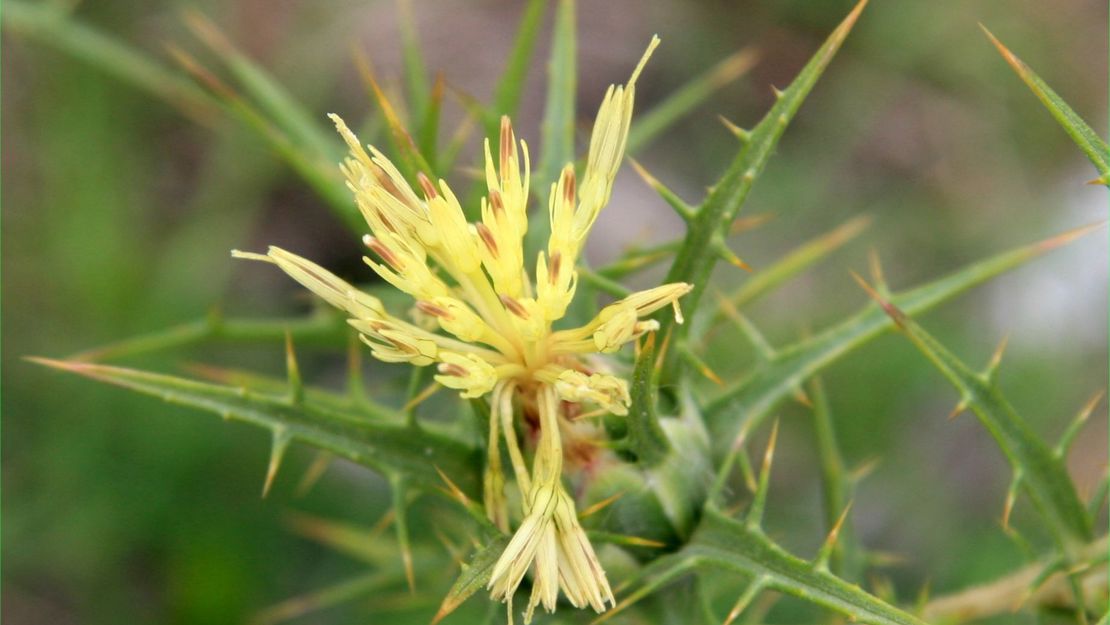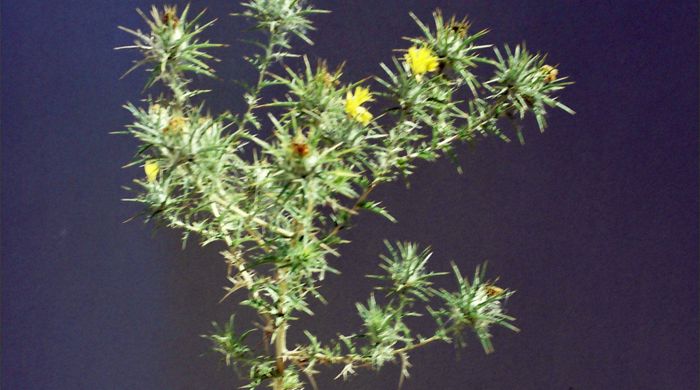Carthamus lanatus
Saffron thistle
Also known as:
Woolly distaff thistle, downy safflower
Family: Asteraceae
Origin: Eurasia

Regional Pest Management Plan (RPMP) status
- Whole region — Sustained control
- Hauraki Gulf Controlled Area Notice pest
General description
Upright, annual or biennial herb < 1 m tall. Taproot is shallow. Stems arise from rosette and are woody, initially single and then branching. Leaves are glossy, dark green and spiny. Flowers are yellow with purplish veins and bear a bract of prickles below. Achenes bear pappus.
What you need to know
To help protect our environment:
- You must not breed, distribute, release or sell saffron thistle within the Auckland region.
- You must not plant saffron thistle within the Auckland region, unless you are transferring an existing plant on your land to another location within the boundaries of the same property.
- You must destroy any saffron thistle on land that you occupy if it has been planted in breach of the above rules and you are directed to do so by an authorised person.
Habitats
Pasture, wasteland, open or disturbed sites.
Dispersal
Seeds dispersed by gravity, wind and attachment to livestock.
Impact on environment
Competes with desirable pasture species, impedes stock movement and injures grazing animals. Unpalatable to stock. Competes with crops and impedes harvesting equipment. Likely to be a reservoir of crop pathogens.
Control
Site Management
Maintaining good pasture cover can prevent establishment or suppress an infestation. Prevent overgrazing especially in summer. Other herbicides are available for selective use in pasture.
Recommended approaches
Physical control
Method: Dig or grub out at least the first 5cm of taproot.
Plant parts requiring disposal: Seeds.
Disposal options: Remove to greenwaste or landfill if practical.
Biocontrol
Biocontrol is currently not available for this species.
Community agrichemical control recommendations
No qualifications: Foliar spray with 100ml glyphosate green per 10L of water.
Certified Handler/Experienced agrichemical user: Foliar spray with 100ml glyphosate green per 10L of water and 20ml penetrant.
Safety notes
Plant has spines.
Caution: When using any herbicide or pesticide please read the label thoroughly to ensure that all instructions and safety requirements are followed.






